SLUSBH2G March 2013 – March 2019
PRODUCTION DATA.
- 1 Features
- 2 Applications
- 3 Description
- 4 Revision History
- 5 Pin Configuration and Functions
- 6 Specifications
-
7 Detailed Description
- 7.1 Overview
- 7.2 Functional Block Diagram
- 7.3
Feature Description
- 7.3.1 Maximum Power Point Tracking
- 7.3.2 Battery Undervoltage Protection
- 7.3.3 Battery Overvoltage Protection
- 7.3.4 Battery Voltage within Operating Range (VBAT_OK Output)
- 7.3.5 Storage Element / Battery Management
- 7.3.6 Programming OUT Regulation Voltage
- 7.3.7 Step Down (Buck) Converter
- 7.3.8 Nano-Power Management and Efficiency
- 7.4 Device Functional Modes
- 8 Application and Implementation
- 9 Power Supply Recommendations
- 10Layout
- 11Device and Documentation Support
- 12Mechanical, Packaging, and Orderable Information
Package Options
Mechanical Data (Package|Pins)
- RGR|20
Thermal pad, mechanical data (Package|Pins)
- RGR|20
Orderable Information
8.2.2.3 Application Curves
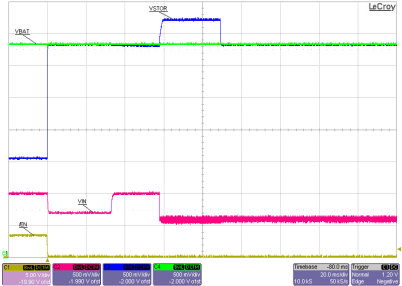
| VIN_DC = 1.0 V power supply 100Ω series resistance |
| VBAT = 3.4-V charged Li coin cell |
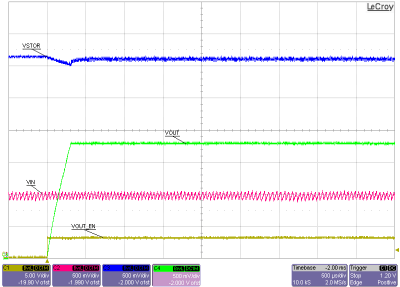
| VIN_DC = 2.0 V power supply 100Ω series resistance |
| VBAT = 3.1-V charged Li coin cell |
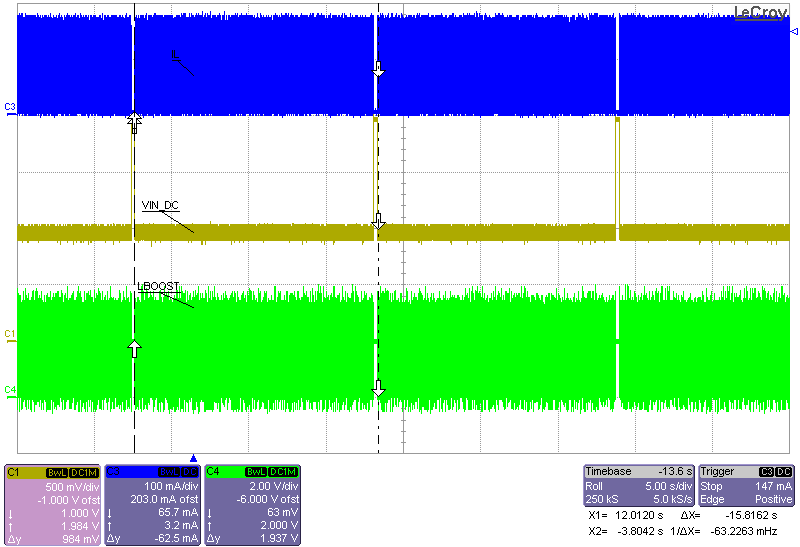
| VIN_DC = sourcemeter with VSOURCE = 2.0 V and compliance of 43 mA |
| VBAT = sourcemeter with VSOURCE = 3.0 V and compliance
of 1 A |
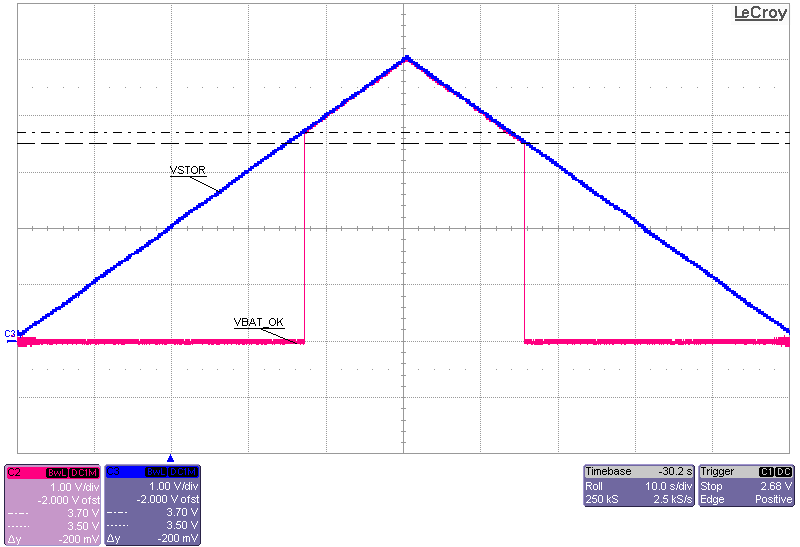
| VIN_DC floating |
| No storage element on VBAT or VBAT_PRI |
| VSTOR artifically ramped from 0 V to 5.0 V to 0 V using a function generator |
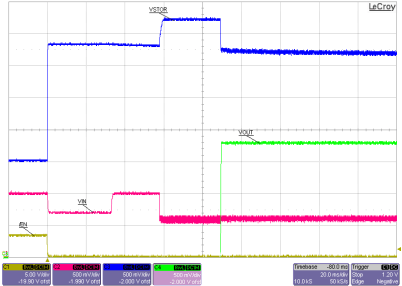
| VIN_DC = 1.0 V power supply 100Ω series resistance |
| VBAT = 3.4-V charged Li coin cell |
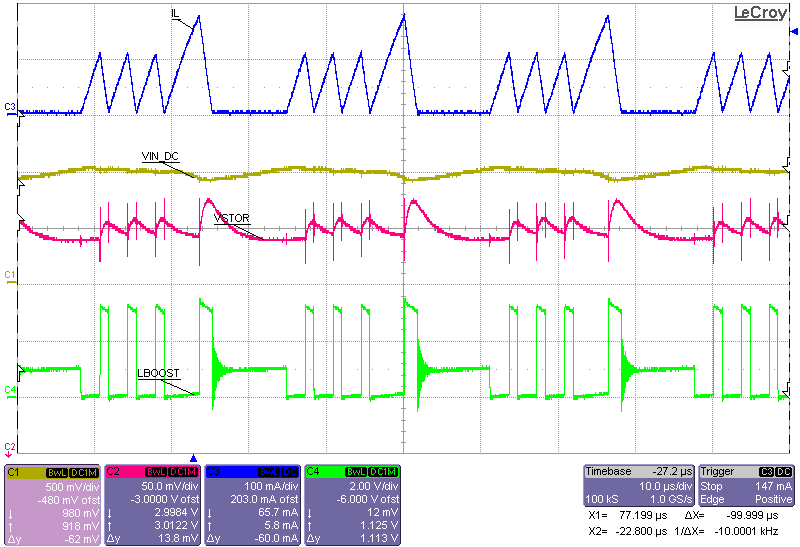
| VIN_DC = sourcemeter with VSOURCE = 2.0 V and compliance of 43 mA |
| VBAT = sourcemeter with VSOURCE = 3.0 V and compliance of 1 A |
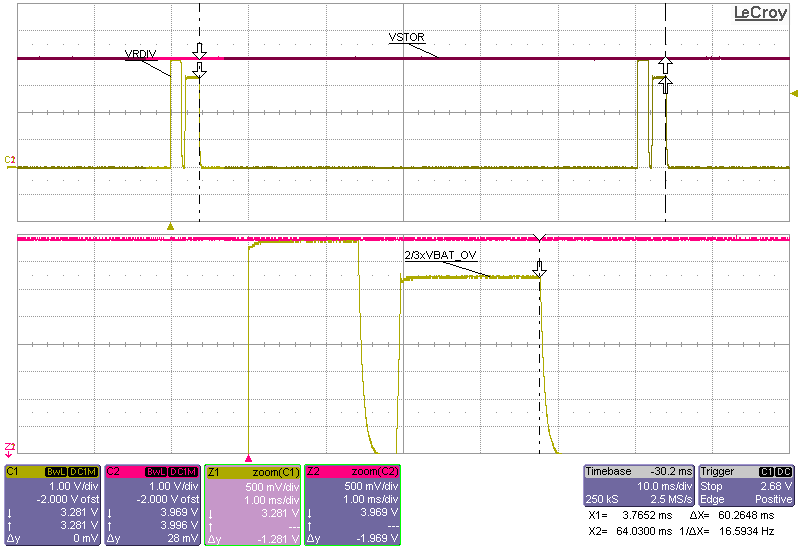
| VIN_DC = sourcemeter with VSOURCE = 2.0 V and compliance of 43 mA |
| VBAT = sourcemeter with VSOURCE = 4.0 V and compliance
of 1 A |